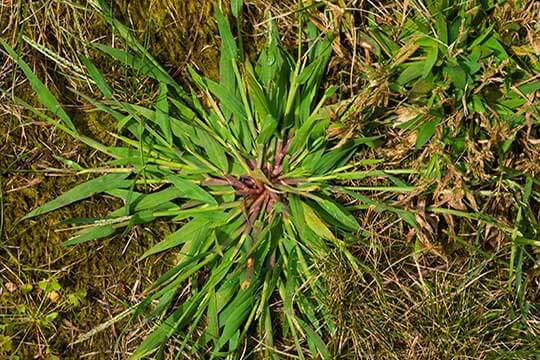Noticing yellow patches in your lawn? The culprit might be summer patch, a disease caused by the Rhizoctonia fungus. This common fungal issue, also known as rhizoctonia, typically appears in spring when temperatures are cool and humidity is high. Although there is no curative treatment, proper lawn care practices can limit the damage and help restore your lawn to a healthy green. Let’s look at the symptoms, causes, and best ways to prevent and manage this disease.
How to recognize summer patch
The first signs are small light-green spots that gradually turn yellowish-green, then fully yellow. Left untreated, these spots may expand and merge, creating large yellow patches with tufts of green grass in the center. When temperatures rise and humidity persists, the grass may naturally recover and green up again. However, if patches exceed 90 cm (about 3 feet) in diameter, the turf may die and turn brown, requiring more targeted restoration efforts.
Why does this disease affect your lawn?
Summer patch thrives under certain conditions:
- Compacted or poorly drained soil holds moisture for days, which promotes fungal growth.
- Thatch buildup creates a moist environment ideal for the fungus.
- Cool temperatures and high humidity in spring increase the risk of infection.
- Improper watering, such as overwatering or frequent shallow watering, can worsen the problem.
How to prevent and manage summer patch
- Proper watering is essential. Normally, a lawn needs 1 to 2 inches (2.5 to 5 cm) of water per week, depending on weather and soil conditions. If rainfall is insufficient, water deeply three times per week, while respecting any local watering restrictions. Be sure to let the grass dry out completely between waterings to avoid excessive moisture that encourages fungal growth.
- Aerating the soil is also helpful, especially in compacted areas, as it improves water infiltration.
- Regular dethatching prevents moisture retention and allows water to reach the root zone more effectively.
- Lastly, routine lawn maintenance—including proper fertilization and mowing to a height of around 8 cm—will help strengthen your lawn and make it more resilient to disease.
Repairing damaged areas
If summer patch has caused permanent damage, lawn restoration is necessary. Once the disease is no longer active, rake and dethatch dead areas to remove infected material. Then, overseed with grass varieties suited to your soil conditions to encourage recovery. Proper watering and follow-up care will support strong new growth.
Avoid doing this work during extreme heat or drought, as it could further stress the lawn and cause additional damage.
A healthy lawn is a resilient lawn
While summer patch may seem alarming, it can be effectively managed with the right lawn care practices. Good drainage, strategic watering, and consistent maintenance are key to reducing its impact and keeping your lawn green and thriving all season long. With a bit of care and attention, your lawn will remain strong and healthy—even through Quebec’s unpredictable weather.
Not sure what’s affecting your lawn? Reach out to your Nutrite Expert for a proper diagnosis and tailored solutions to bring your lawn back to life.





